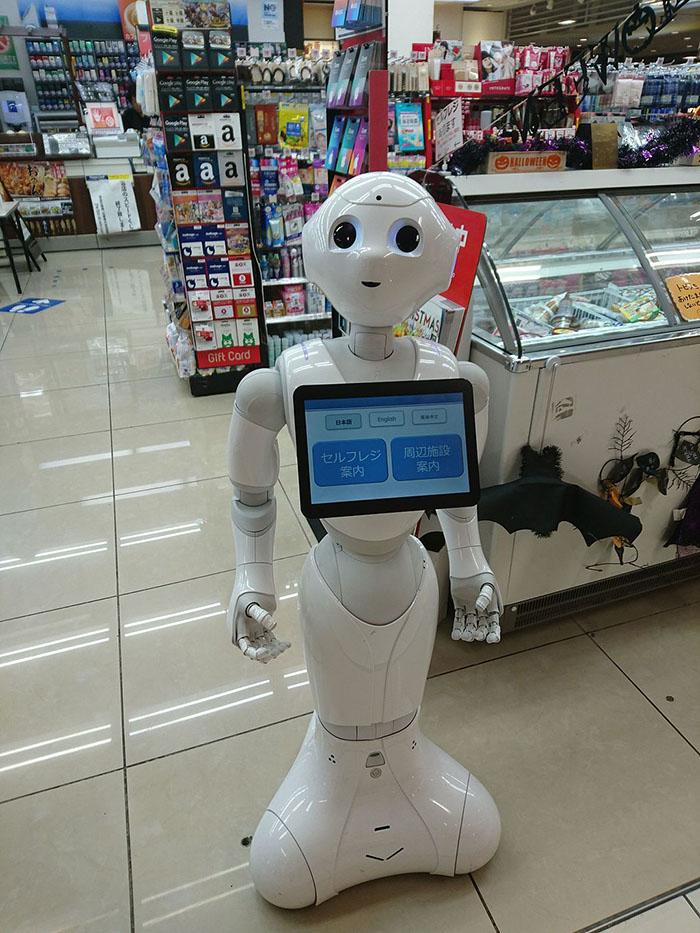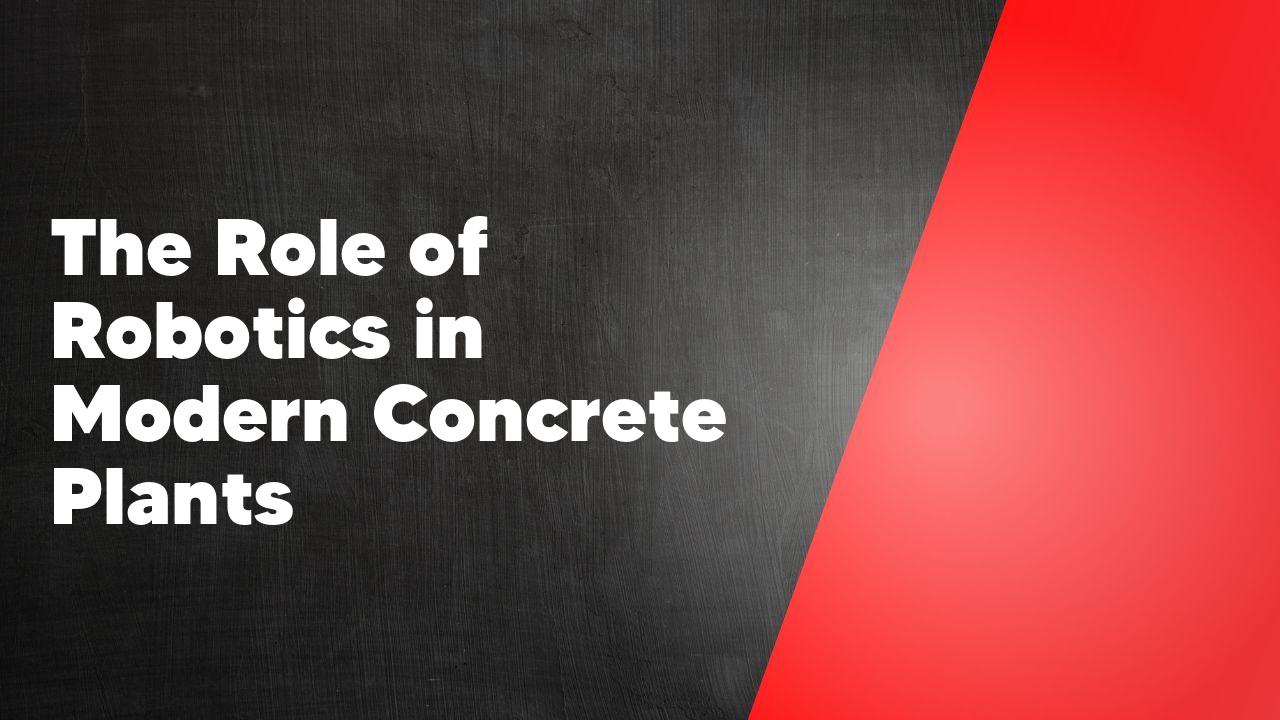In recent years, the use of robotics in various industries has become increasingly prevalent, and the concrete industry is no exception. With advancements in technology, robotics has found its way into modern concrete plants, revolutionizing the way concrete is produced. This article explores the role of robotics in modern concrete plants, highlighting the benefits and challenges associated with their implementation.
Introduction to Robotics in Concrete Plants
Robotics is revolutionizing the concrete industry, bringing automation and efficiency to concrete plants. With the introduction of robotics, concrete plants can now streamline their operations, increase productivity, and improve the quality of their products. These robots are designed to perform various tasks such as mixing, pouring, and transporting concrete, eliminating the need for manual labor and reducing the risk of human error. Additionally, robotics in concrete plants can also enhance safety by minimizing the exposure of workers to hazardous environments. Overall, the integration of robotics in concrete plants is transforming the industry, making it more sustainable, cost-effective, and technologically advanced.
Advancements in Robotic Technology for Concrete Production

Advancements in robotic technology have revolutionized the concrete production industry. With the introduction of robotic systems, the process of pouring and shaping concrete has become more efficient and precise. These robots are equipped with advanced sensors and cameras that allow them to accurately measure and analyze the concrete mixture, ensuring the perfect consistency and quality. Additionally, robotic arms can be programmed to perform complex tasks such as creating intricate designs and patterns in the concrete. This not only saves time and labor costs but also allows for more creative and unique concrete structures. Overall, the advancements in robotic technology have greatly improved the concrete production process, making it faster, more accurate, and more versatile.
Benefits of Implementing Robotics in Concrete Plants
Implementing robotics in concrete plants can bring numerous benefits to the industry. Firstly, robots can significantly improve the efficiency and productivity of concrete production. They can work tirelessly and consistently, reducing the need for human labor and minimizing errors. This can lead to faster production times and higher quality concrete. Additionally, robots can enhance workplace safety by taking over hazardous tasks, such as heavy lifting or working in confined spaces. This can reduce the risk of accidents and injuries for workers. Moreover, robotics can also contribute to cost savings in the long run, as they require less maintenance and can operate continuously without breaks. Overall, implementing robotics in concrete plants can revolutionize the industry and lead to improved efficiency, safety, and profitability.
Automation and Efficiency in Concrete Production with Robotics
Automation and robotics have revolutionized the concrete production industry, bringing increased efficiency and productivity. With the use of advanced technology, such as robotic arms and automated systems, the process of mixing, pouring, and shaping concrete has become faster and more precise. These robots can perform repetitive tasks with accuracy and consistency, reducing the risk of human error. Additionally, automation allows for continuous production, eliminating the need for manual labor and increasing overall output. This not only saves time and money but also ensures a higher quality end product. The integration of robotics in concrete production is a game-changer, paving the way for a more efficient and sustainable construction industry.
Challenges and Limitations of Robotic Systems in Concrete Plants
Robotic systems have revolutionized various industries, including concrete plants. However, these systems also come with their fair share of challenges and limitations. One major challenge is the complexity of the concrete production process. Concrete plants involve multiple steps, such as mixing, pouring, and curing, which require precise coordination and control. Robotic systems need to be programmed and calibrated accurately to ensure seamless operation. Additionally, the size and weight of concrete materials pose a limitation for robotic systems. Handling heavy loads and navigating through narrow spaces can be challenging for these machines. Furthermore, the cost of implementing robotic systems in concrete plants can be a significant barrier for smaller businesses. Despite these challenges and limitations, advancements in technology continue to improve the efficiency and effectiveness of robotic systems in concrete plants.
Future Prospects and Innovations in Robotic Applications for Concrete Production
The future prospects for robotic applications in concrete production are promising. With advancements in technology, robots are becoming more efficient and capable of performing complex tasks in the construction industry. One innovation that holds great potential is the use of 3D printing robots to create concrete structures. This method allows for precise and customizable designs, reducing the need for manual labor and increasing productivity. Additionally, autonomous robots equipped with sensors and artificial intelligence can be used for tasks such as concrete mixing and pouring, improving safety and accuracy on construction sites. Overall, the integration of robotics in concrete production has the potential to revolutionize the industry and lead to faster, more cost-effective, and sustainable construction processes.
Conclusion
In conclusion, robotics has revolutionized the concrete industry by increasing efficiency, accuracy, and safety in concrete plants. With the use of robotic systems, concrete plants can now automate various tasks such as mixing, pouring, and quality control, resulting in higher productivity and reduced labor costs. As technology continues to advance, it is expected that robotics will play an even greater role in the future of concrete production, further improving the overall quality and sustainability of the construction industry.
What is the role of robotics in modern concrete plants?
Robotics plays a crucial role in modern concrete plants by automating various tasks involved in the production process. This includes tasks such as mixing, pouring, and shaping concrete, as well as handling and transporting heavy materials.
How do robots improve efficiency in concrete plants?
Robots improve efficiency in concrete plants by performing tasks with precision and consistency. They can work continuously without the need for breaks, resulting in increased productivity and reduced labor costs. Additionally, robots can work in hazardous environments that may be unsafe for human workers.
What are the benefits of using robotics in concrete plants?
Using robotics in concrete plants offers several benefits. It improves the quality and consistency of the concrete produced, reduces the risk of human error, and enhances workplace safety by minimizing the need for human workers to perform physically demanding tasks. Furthermore, robotics can optimize resource utilization and reduce waste.
Are robots replacing human workers in concrete plants?
While robots are increasingly being used in concrete plants, they are not necessarily replacing human workers. Instead, they are often deployed to work alongside human workers, complementing their skills and capabilities. This collaboration between humans and robots can lead to improved efficiency and productivity.
What skills are required to operate and maintain robots in concrete plants?
Operating and maintaining robots in concrete plants typically requires specialized skills. These may include programming and troubleshooting robotic systems, as well as knowledge of the specific tasks and processes involved in concrete production. Training and ongoing education are essential to ensure the effective operation and maintenance of robotic systems.
What is the future of robotics in concrete plants?
The future of robotics in concrete plants is promising. Advancements in technology are enabling the development of more sophisticated and intelligent robotic systems. These systems can adapt to changing conditions, learn from experience, and collaborate with human workers more seamlessly. As a result, the role of robotics in concrete plants is expected to continue expanding, leading to further improvements in efficiency, safety, and quality.

